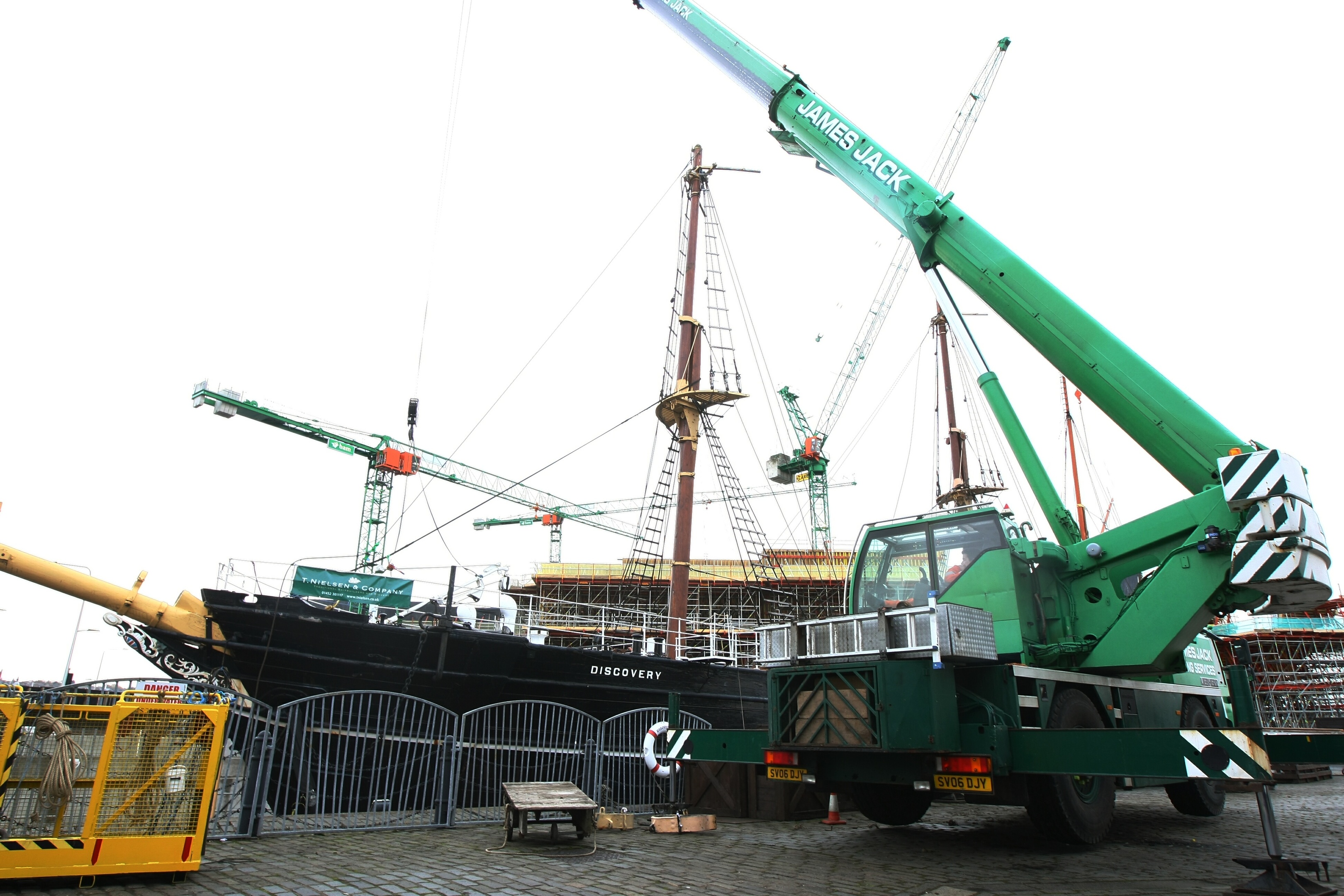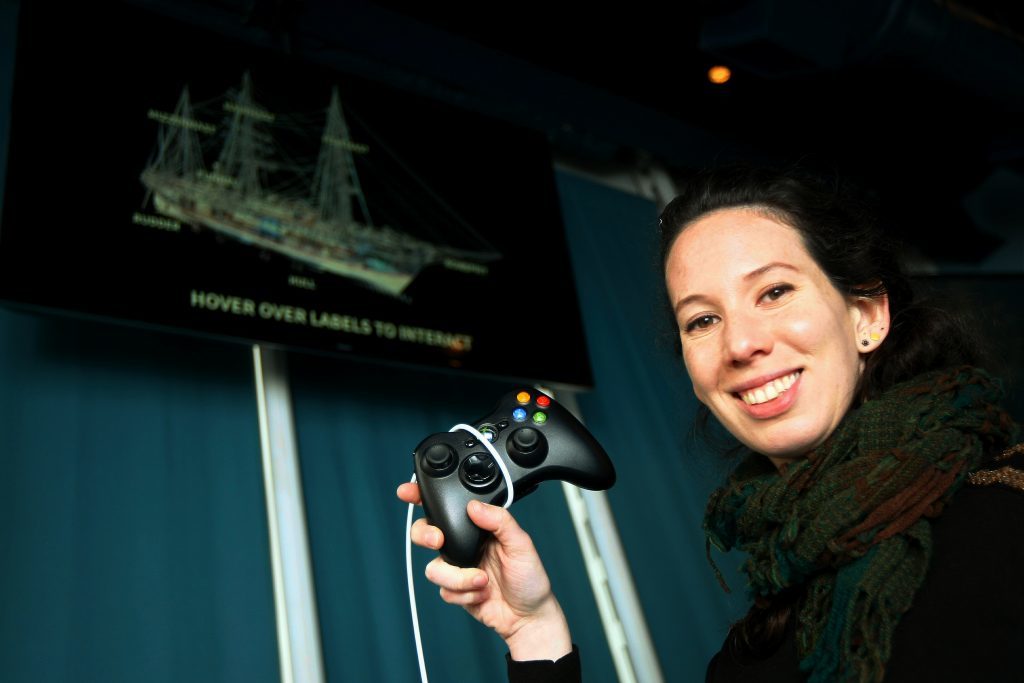Essential conservation work has begun on Dundee’s iconic 116-year-old ship, RRS Discovery.
The project has seen the ship’s huge masts come down in order to assess and repair damage inflicted by a combination of time and weather.
Dry-docked at Discovery Point, the ship is currently a shadow of its usual self, but co-coordinators of the effort said the work is a landmark step.
Paul Jennings, executive director of Dundee Heritage Trust (DHT), said: “This is not only a historic vessel we have in RRS Discovery, but history in the making while the rigging work takes place.
“It’s not often that people see such an iconic vessel undergoing such a large-scale conservation project, with her rigging and masts down, but that’s what she looks like now.”
Also involved in the effort are Project Manager John Watson, DHT operations director Mark Munsie, and campaign donor Jill Sim.
One of the biggest tasks is to remove and analyse the bowsprit, a 1.2 tonne wooden spar jutting out from the vessel’s prow.
The team are unsure of the extent of the internal rot in this part of the ship and are planning to jack it out in order to bore further holes into it.
The need for extensive repair work was uncovered after a survey in 2012 showed deterioration to the masts and rigging.
The rigging aspect of the work is expected to be the most time-consuming and expensive, totalling £350,000.
And DHT still needs a further £18,000 to help pay for this part of the project after successfully raising over 50% of its crowdfunding target in just over a week.
Mark Munsie, operations director with DHT, said that the crowdfund effort was essential to help cover costs.
“As a small independent charity this project is a major cost for Dundee Heritage Trust,” he said.
“It cannot be covered by our existing maintenance budgets and that’s why we’re running this crowdfunding campaign, which we hope will help secure RRS Discovery for future generations.”
The repairs will take an estimated nine months, during which time alternative arrangements have been designed by St Andrew University so as to lessen the impact for visitors.
A team from the university, led by Catherine Cassidy, head of digital curation for Smart History, has installed an interactive substitute which involves visitors taking their own tour of the ship using Xbox controllers in a gaming-style walk through.
The ship is famous for its involvement in an expedition to Antarctica, during which it was locked in ice for two years but returned home to British shores and helped to confirm the little-explored area as a continent.
It is also well-known for being the last traditional wooden three-masted ship to be built in Britain.
The visitor centre remains open while the work is completed, with a 50% discount available up until November 21.











